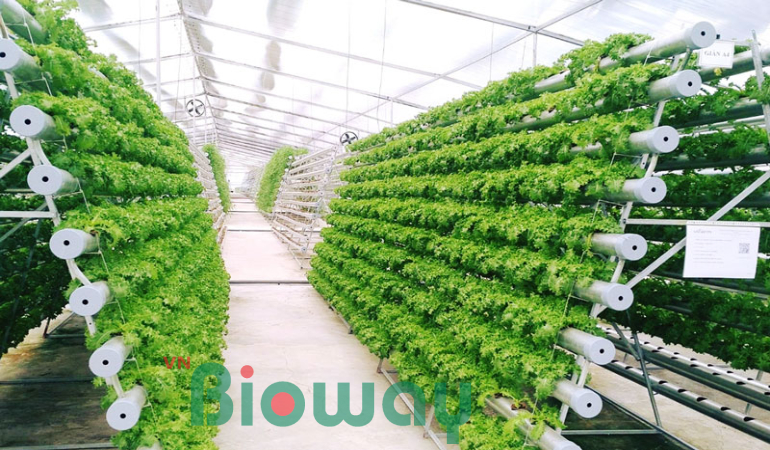Vietnam is moving towards a green agriculture model with the goal of protecting the environment and people, reusing organic waste from production, safeguarding resources and ecosystems, and processing agricultural by-products using AT technology with organic fertilizers to promote green agriculture. However, this model has not yet been widely adopted in Vietnam. So, what is green agriculture, and what are some exemplary models?
Green agriculture refers to farming practices that apply processes and technologies that save input materials and use natural resources efficiently. It aims to enhance the competitiveness of agricultural products, develop waste treatment and reuse technologies, provide stable income and improve the quality of life for farmers, and protect agricultural resources and ecosystems.
Several notable green agriculture models are currently in use. One such model is hydroponic vegetable cultivation. With this model, you can grow clean vegetables at home using hydroponic methods. This model not only provides a source of clean vegetables but also offers high profits with low maintenance costs.
Another green agriculture model is aquaponics, which combines hydroponic vegetable cultivation with fish farming. In this model, you can grow organic hydroponic vegetables and raise clean fish at home. The system is a closed-loop cycle where fish waste is used as a nutrient for plants, and the water is recycled. This model not only provides clean vegetables and fish but also helps maintain a balanced ecosystem.
The integration of tourism with green agriculture is also developing rapidly. Combining tourism with green agriculture not only enriches and attracts more tourism products but also provides better income for farmers. Visitors get the chance to experience agricultural activities and connect closely with nature.
The large-scale demonstration farm model is another example of green agriculture. This model links various stakeholders and receives government support with machinery and cultivation techniques. It helps reduce the area of indiscriminate farming and ensures environmental safety.
Green agriculture offers many benefits, such as reducing emissions and the impact of harmful chemicals, protecting the environment and human health, producing safe and clean products, and maintaining ecosystems and biodiversity. However, there are also some limitations, such as limited widespread adoption, higher time and effort requirements compared to conventional methods, and higher costs.
In Vietnam, green agriculture models are being applied and showing positive results, contributing to the development of the agricultural sector and increasing farmers’ income.

 Tiếng Việt
Tiếng Việt



